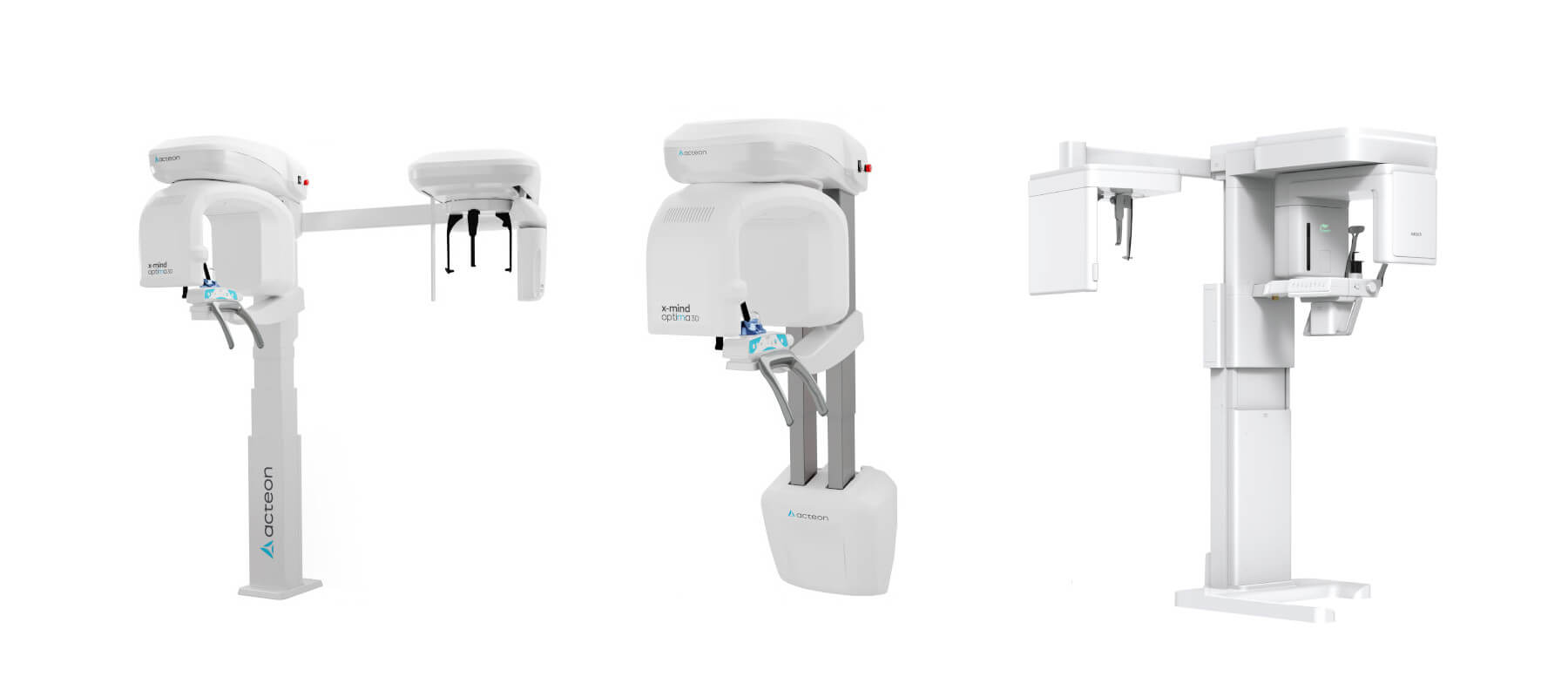
As a dental professional, you understand the importance of staying ahead of the curve when it comes to cutting-edge technology.
Enter cone beam computed tomography (CBCT).
A game-changer in dental imaging that has revolutionised the way dental professionals approach diagnosis and treatment planning.
This comprehensive guide is designed to assist you in selecting the best CBCT machine that aligns with your unique needs.
You can make an informed investment by striking the perfect balance between your current requirements and future growth aspirations.
An investment that not only meets your present demands, but also positions your practice for long-term success.
CBCT technology offers superior diagnostic capabilities compared to traditional X-rays.
These machines provide detailed 3D images of oral structures, aiding in accurate diagnosis and treatment planning with enhanced capabilities.
Embracing in-house 3D imaging with CBCT can unlock a myriad of benefits for your practice.
For an in-depth exploration of these advantages, we invite you to read our dedicated article: The Benefits of In-House 3D Imaging Systems.
From enhancing the patient experience to boosting referral rates and elevating your practice’s value, the advantages are hard to ignore.
By offering a wider range of treatment options and instilling confidence in your patients through precise diagnoses, CBCT technology can pave the way for increased revenue streams within your practice.
Moreover, the market offers a diverse array of CBCT machines, each presenting unique advantages.
Investing in CBCT scanners can lead to significant returns on investment, especially in cases like single or two implant procedures where a certain number of scans can generate substantial value ROI.

CBCT and OPG (Orthopantomography) are both pivotal in dental diagnostics, yet they serve different purposes and come with distinct advantages and considerations.
Understanding these differences is crucial for dental professionals when selecting the right imaging technology for their practice.
Advancements in CBCT technology have significantly reduced radiation doses, making them safer for patients while delivering detailed information necessary for effective dental procedures.
In comparison, OPG gives a 2D panoramic view with even lower radiation exposure, making it suitable for initial assessments and routine check-ups.
* The Planmeca ProMax 3D Classic captures CBCT images at doses comparable to or even lower than panoramic images, and the Vatech Green 16/18 CBCT also provides low-dose X-ray radiography.
| Feature | CBCT | OPG |
|---|---|---|
| Imaging Type | 3D | 2D |
| Primary Use | Implant planning, orthodontics, endodontics, oral surgery | General dental assessments, orthodontic planning |
| Radiation Exposure | Reduced compared to traditional X-rays, but higher than OPG * | Lower than CBCT |
| Image Detail | High resolution, detailed 3D images | Panoramic view, less detail compared to CBCT |
| Diagnostic Value | Comprehensive diagnostic information for complex cases | Suitable for routine exams and initial assessments |
Choosing between CBCT and OPG depends on the specific needs of the dental practice, the type of procedures commonly performed, and the level of detail required for diagnosis and treatment planning.
If you’re looking for expert guidance to choose the right machine that aligns with your dental practice’s specific needs, our equipment specialists are here to help.
Contact us today to explore the best options tailored to your practice’s requirements and ensure you make an informed investment.
It’s crucial to take a comprehensive approach to investing in CBCT technology by evaluating both your current operational demands and future growth aspirations.
This proactive mindset will ensure that the CBCT machine you choose not only caters to your present imaging requirements but also accommodates the potential expansion and evolution of your practice.
By carefully assessing your current patient volume, treatment offerings and diagnostic imaging needs, you can identify the specific functionalities and capabilities required.
Simultaneously, considering your long-term goals, potential new service lines, and evolving industry trends will help you make a future-proof investment that positions your practice for continued success, enabling you to buy for growth.
Alongside evaluating your practice’s imaging needs, a key consideration is the physical space and technical requirements for housing a CBCT machine.
Some compact models are designed to be wall-mounted, optimising space utilisation. For example, the Acteon X-MIND Prime 2 in our DH Keen surgery case study.
Factors such as radiation safety protocols, electrical and plumbing specifications, and potential room renovations or conversions must be carefully assessed.
We were asked to convert a stock room into a CBCT room, with very short notice by Crowborough Gentle Dental.

Ensuring adherence to radiation protection legislation and best practices for patient safety is paramount.
Guidance documents like those provided by the Health Protection Agency (HPA) offer invaluable resources to ensure the safe use of dental CBCT equipment within your practice, providing guidelines on radiation safety measures.
By thoughtfully considering these spatial and technical factors, you can optimise your practice’s layout, maximise efficient use of available space and create a seamless integration of CBCT technology into your existing workflow.
Identifying the ideal CBCT machine for your dental practice is a critical decision that requires careful consideration of your dental speciality’s unique requirements.
By understanding factors such as field of view (FOV) sizes, image quality, radiation exposure, voxel size and endo mode capabilities, you can make an informed choice that aligns with your clinical needs and patient care objectives.
It’s important to note that CBCT scans with large FOV were 22.39 times more likely to show an incidental finding than scans with small FOV, underscoring the significance of selecting the appropriate FOV size for your dental speciality and treatment plans.
For implantologists, CBCT technology plays a pivotal role in dental implant planning and execution.
The 3D imaging capabilities of CBCT machines provide a comprehensive view of the patient’s bone structure, allowing for precise assessment of bone density and height, as well as the identification of vital anatomical structures.
This invaluable information enables meticulous implant placement, reducing the risk of complications and ensuring optimal outcomes.
Take a look at these machines:
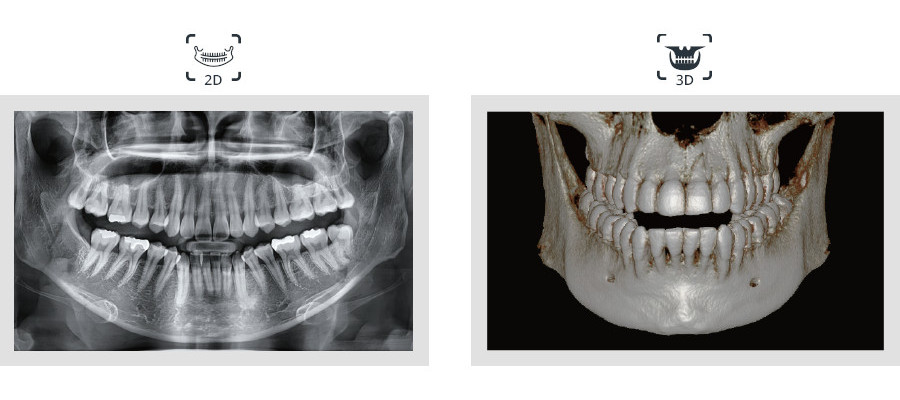
In the realm of endodontics, CBCT machines equipped with endo mode and high-resolution scanning capabilities can greatly improve root canal treatments.
These advanced features allow for detailed visualisation of root canal anatomy, enabling accurate identification of intricate anatomical complexities and potential complications.
By leveraging this level of precision, endodontists can enhance the success rate of root canal treatments and deliver superior patient care.
Machines with endo mode:
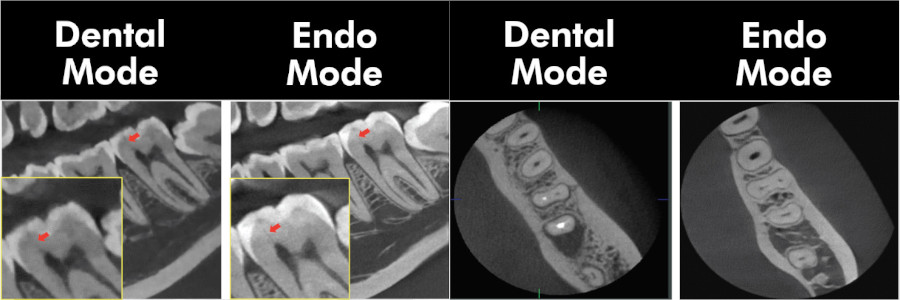
In the field of periodontics, CBCT imaging provides invaluable insights into the intricate details of the jawbone and surrounding structures.
When considering a CBCT machine for periodontal applications, it’s essential to prioritise high-resolution imaging capabilities and a suitable field of view (FOV) that captures the entire jaw area.
This level of detail allows periodontists to accurately assess bone levels, detect bony defects, and identify potential complications, such as furcation involvements or vertical bone defects.
Additionally, CBCT machines with advanced software features that enable precise measurement and quantification of bone levels can be invaluable for periodontal disease evaluation and treatment planning.
Machines with large FOV:
The benefits of CBCT in orthodontic assessment and treatment planning are numerous.
With its 3D imaging capabilities, CBCT technology provides a comprehensive view of the patient’s dentition, jaw structure, and surrounding anatomical features.
This invaluable information aids in accurate diagnosis, precise appliance design, and effective treatment planning, ultimately improving orthodontic outcomes and enhancing patient satisfaction.
Multi-FOV selection:
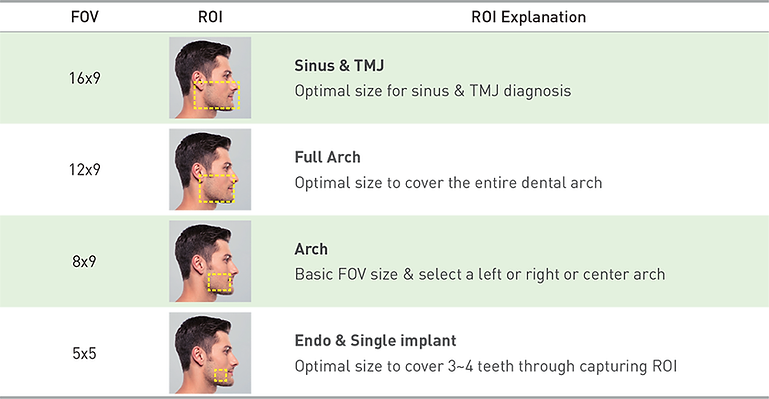
CBCT technology offers a wide range of applications across various dental specialities.
For instance, in oral and maxillofacial surgery, CBCT imaging can be invaluable for evaluating pathologies, assessing impacted teeth and planning surgical interventions.
Additionally, CBCT machines with cephalometric imaging capabilities can be incredibly useful for orthodontists, providing comprehensive 3D analysis of craniofacial structures and aiding in precise treatment planning.
Machines with cephalometric imaging:
With the wide array of CBCT machines available in the market, it’s essential to navigate the options carefully when choosing the right CBCT unit.
Seeking expert advice on selecting the perfect imaging machine for your dental practice?
Our team of equipment specialists is ready to assist you. Contact us on 01322 292222, email us at enquiries@eclipse-dental.com or fill out our Equipment Enquiry form.
When it comes to investing in a CBCT machine, you will need to break down the cost aspects to make an informed decision.
The purchase price is a significant factor, but it’s important to consider the overall investment, including operational costs and potential financing options.
While the upfront CBCT machine cost may seem substantial, it’s crucial to weigh this against the long-term benefits and potential return on investment.
For financing options see our article on How to Secure Financing for Your Dental Practice.
Additionally, it’s wise to consider the ongoing operational costs associated with running a CBCT machine, such as maintenance, software updates, and staff training.
By factoring in these expenses, you can create a comprehensive financial plan and ensure that your investment in CBCT technology is sustainable and profitable for your practice.
Investing in CBCT technology is a strategic decision that can yield significant returns for your practice.
By leveraging the advanced imaging capabilities of CBCT machines, you can elevate your treatment planning processes, offering patients comprehensive solutions tailored to their unique needs.
By clearly communicating treatment options and potential outcomes, you can foster trust and confidence in your practice, leading to increased referrals and a stronger reputation in your community.
As your practice grows and evolves, your imaging needs may also change.
It’s important to recognise the signs that indicate your practice might need to upgrade its CBCT capabilities.
These indicators may include an increase in patient volume, expansion into new treatment areas, or the need for more advanced imaging features to support your clinical expertise.
By staying attuned to these signals, you can ensure that your practice remains at the forefront of technological advancements, providing your patients with the highest quality of care and positioning your practice for continued success.
If you’ve identified the need to upgrade your CBCT capabilities, there are several strategies you can explore to scale your imaging services effectively.
One option is to trade in your existing CBCT machine for a more advanced model, taking advantage of any trade-in programs offered by manufacturers.
Collaboration with other dental practices or imaging centres can also be a viable strategy, allowing you to share resources and access advanced CBCT capabilities when needed, without the need for a significant upfront investment.
When investing in a CBCT machine, it’s crucial to consider the after-sales support provided by the manufacturer or supplier.
Reliable customer service, comprehensive training, and ongoing maintenance are key factors that can make or break the success of your CBCT implementation.
At Eclipse Dental, we understand the importance of after-sales support.
Our team of experts is dedicated to guiding you through the entire process, from selection and installation to staff training and ongoing technical assistance.
We ensure that your practice has the resources and knowledge necessary to seamlessly integrate CBCT technology into your workflow, maximising your investment and enabling you to deliver exceptional patient care.
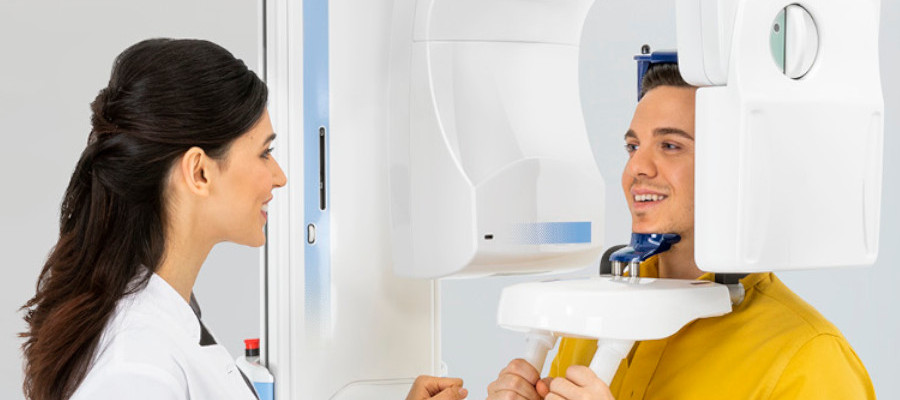
Choosing the right CBCT machine is a critical decision that can significantly impact the success and growth of your dental practice.
By carefully evaluating your current and future needs, understanding the financial implications, and considering the potential for practice expansion, you can make an informed investment that aligns with your clinical aspirations and business objectives.
Remember, CBCT technology is not just a diagnostic tool; it’s a gateway to enhanced patient care, improved treatment outcomes and a competitive edge in the dental industry.
Embrace the possibilities that CBCT has to offer, and partner with a trusted supplier like Eclipse Dental to ensure seamless integration and a maximised return on your investment.
Which is the best CBCT machine?
There is no one-size-fits-all answer to this question, as the “best” CBCT machine will depend on your specific dental practice’s needs, specialities, and budget.
Factors such as field of view (FOV) size, image quality, radiation exposure, and software capabilities should be carefully evaluated.
It’s essential to consider both your current requirements and future growth plans when selecting a CBCT machine.
Why is CBCT better than OPG?
CBCT (Cone Beam Computed Tomography) technology offers several advantages over traditional panoramic radiography (OPG).
CBCT provides superior diagnostic capabilities by offering detailed 3D images of oral structures, enabling accurate diagnosis and precise treatment planning.
Unlike 2D OPG images, CBCT scans provide a comprehensive view of the patient’s dentition, jawbone, and surrounding anatomical structures, allowing for better assessment of bone levels, detection of bony defects, and identification of potential complications.
Additionally, CBCT scans typically involve lower radiation exposure compared to traditional X-rays, ensuring patient safety while delivering the necessary diagnostic information.
How much does a CBCT machine cost?
The cost of a CBCT machine can vary significantly depending on factors such as the manufacturer, model, features, and capabilities.
Entry-level CBCT machines can range from £50,000 to £100,000, while more advanced models with larger fields of view and higher resolutions can cost upwards of £200,000.
It’s important to consider not only the upfront purchase price but also the ongoing operational costs, such as maintenance, software updates, and staff training.
How do I integrate CBCT technology into my dental practice?
Integrating CBCT technology into your dental practice requires careful planning and execution.
It’s essential to evaluate your practice’s specific needs and select a CBCT machine that aligns with your specialities and treatment offerings.
Additionally, you’ll need to consider factors such as room requirements, radiation safety protocols, and staff training.
Partnering with a reputable supplier like Eclipse Dental can be beneficial, as we offer comprehensive support services, including installation, staff training, and ongoing technical assistance.
Effective marketing strategies should also be implemented to communicate the benefits of your new CBCT capabilities to existing and potential patients.

I have used them for the first time in recent months for a complicated project in carrying out a practice refurbishment. Eclipse were meticulous and brilliant. Very knowledgable engineers and a beautiful finish to my practice. They really are a family based business who will look after you. Very professional company and will definitely keep using them.

I had my 2 surgery practice completely stripped out and services repositioned with new flooring, new equipment and redecorated. They kept to the agreed time scale and we were up and running in our state-of-the-art new surgery. Thank you Eclipse and I will be using your services again.

I did a lot of research looking for a dental fit-out company before I came across Eclipse Dental. They designed the surgery exactly the way I wanted it to look which suits my requirements perfectly. The final result was phenomenal, just phenomenal!

The engineers that attend our practice are very knowledgeable and always act in a professional manner. If we have an emergency situation John Boyt always tries his best to fit us in. I have no hesitation in recommending Eclipse Dental Engineering to you for all your servicing and breakdown needs.

Eclipse listened to my ideas, they added a lot to them and improved my initial design. They had loads of realistic and creative ideas for a 21st century dental practice! Two surgeries were refurbished on time without any interruption of our clinics.

We would highly recommend the awesome Eclipse team who guided us through the design process, finishing touches and colour schemes. Their ability to combine build works with equipment and dental engineering makes it so much easier and better value.

I am very pleased with the result, it is of a high quality and surpassed my expectations, on the strength of the work done I commissioned some extra wall cabinetry. The whole process was hassle-free and I would be very happy to recommend Eclipse to my friends in the business.
We used Eclipse recently in an emergency as we had equipment failure. They were very quick to respond to our call and were able to get us working again within 2 hours. The engineer was very friendly and professional and I would highly recommend this company.

I would like to express my gratitude to you and your team for your professionalism and prompt response when our dental chair packed up. You attended the same day, removed the damaged chair and installed a rental to allow us to continue practising.
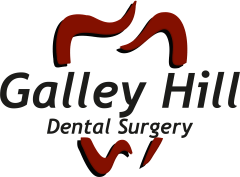
Having dealt with many fit-out companies over the years, Eclipse Dental has been one of the most professional, dependable and sincere companies I have ever worked with. I would not hesitate to use their services again.
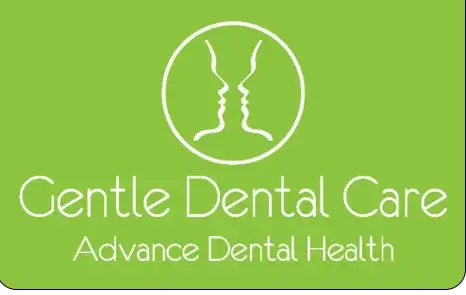
Excellent service, Eclipse have worked tirelessly for us and have always come out same day if we have a problem stopping us working. Thanks to all at Eclipse.
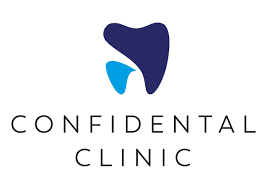
Their awareness of CQC regulations regarding equipment relocation and our necessity to minimise downtime was brilliant. We would like to recommend Eclipse Dental to anyone considering a refurbishment or relocation.
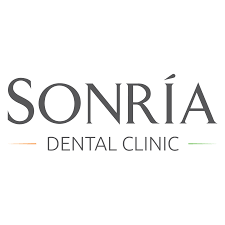
Very happy with the service and reliability of the team. From the beginning to the end, everyone was always helpful and very kind. I definitely will recommend Eclipse Dental!

I liked how swiftly the projects were done. Everything was managed, everything was timed and everything was coordinated. And every day we saw something happening. It was very exciting.

The quality of craftsmanship was exceptional—the cabinetry, flooring and all custom elements were made precisely to our specifications and aligned perfectly with our vision for the space.

Brilliant. Just professional! Complete refit of surgery. Flawless.

The boys did well! We didn’t give them much time to prepare but they did a great job, extremely pleased.

We have had the chairs for some time now and are happy with them. They serve what we need them for. The aftercare service is excellent

Eclipse are very flexible and listen to your needs. We are very impressed with the quality of workmanship they delivered. I would not hesitate to continue recommending Eclipse.
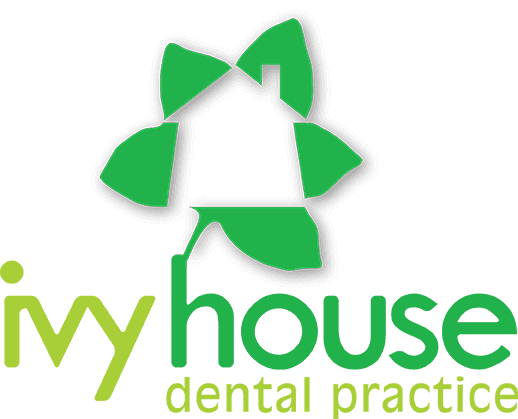
Eclipse were always accommodating of any requests and would always go the extra mile. I look forward to working with them for many years to come.

We are delighted with the end result. The practice looks good and, more importantly, works ergonomically and efficiently.